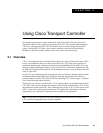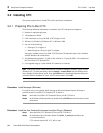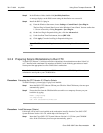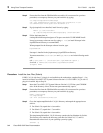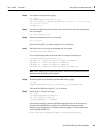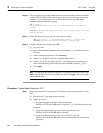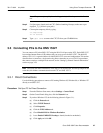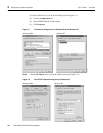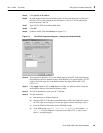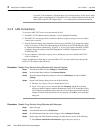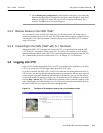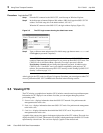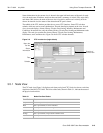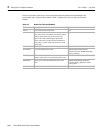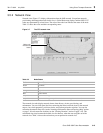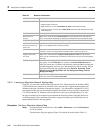
CHAPTER
Cisco ONS 15327 User Documentation 3-1
3
Using Cisco Transport Controller
This chapter explains how to connect workstations to the Cisco ONS 15327 and use the Cisco
Transport Controller (CTC) software to operate the ONS 15327. This includes understanding the
CTC views; setting up basic ONS 15327 information, such as security, timing, and protection
groups; viewing ONS 15327 data, such as alarms, conditions, and events; and customizing
information, such alarm profiles, external alarms and controls, and network maps.
3.1 Overview
CTC is a Java application that is downloaded from the Cross-Connect, Timing and Control (XTC)
card to your workstation when you connect to the ONS 15327. CTC allows you to perform all
operations, administration, maintenance, and provisioning (OAM&P) tasks for ONS 15327 using
Netscape or Microsoft® Internet Explorer. You can also use TL1 commands to communicate with
the ONS 15327 through VT100 terminals, VT100 emulation software, or you can Telnet to the node
using TL1 port 2361.
To use CTC, your workstation needs an appropriate version of Netscape, Internet Explorer and the
Java Runtime Environment (JRE) and Java plug-ins. Netscape and the required Java files are
provided on the Cisco ONS 15327 Software CD. The “Installing CTC” section on page 3-2 explains
how to install Netscape and the Java files.
The first time you connect to an ONS 15327, a CTC launcher applet is downloaded from the ONS
15327 XTC card to your workstation. The launcher verifies that the workstation has a CTC version
that matches the version on the XTC. If the workstation does not have CTC, or if the version on the
XTC is a later release, the launcher downloads the CTC application to the temporary directory
designated by your workstation’s operating system and then runs the application.
Note Always point your browser to the node running the most recent release (version) of CTC.
CTC is backward compatible but not forward compatible.



